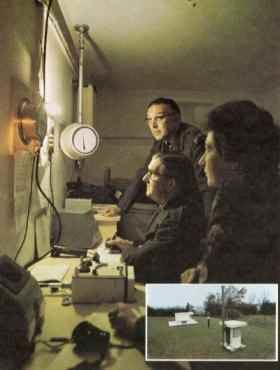 | ||
Similar Royal Observer Corps , Royal Observer Corps Monitoring Post , Bomb Power Indicator | ||
The Royal Observer Corps (ROC) was a civil defence organisation operating in the United Kingdom between October 1925 and 31 December 1995, when the Corps' civilian volunteers were stood down. (ROC headquarters staff at RAF Bentley Priory stood down on 31 March 1996). Composed mainly of civilian spare-time volunteers, ROC personnel wore a Royal Air Force (RAF) style uniform and latterly came under the administrative control of RAF Strike Command and the operational control of the Home Office. Civilian volunteers were trained and administered by a small cadre of professional full-time officers under the command of the Commandant Royal Observer Corps; a serving RAF Air Commodore.
Contents
- Initial detection of nuclear bursts on the UK
- Static measurement of ionising radiation
- Portable measurement of radiation during Mobile Monitoring missions
- Measurement of personal absorptions
- References
This sub article lists and describes the instruments used by the ROC in their nuclear detection and reporting role during the Cold War period.
